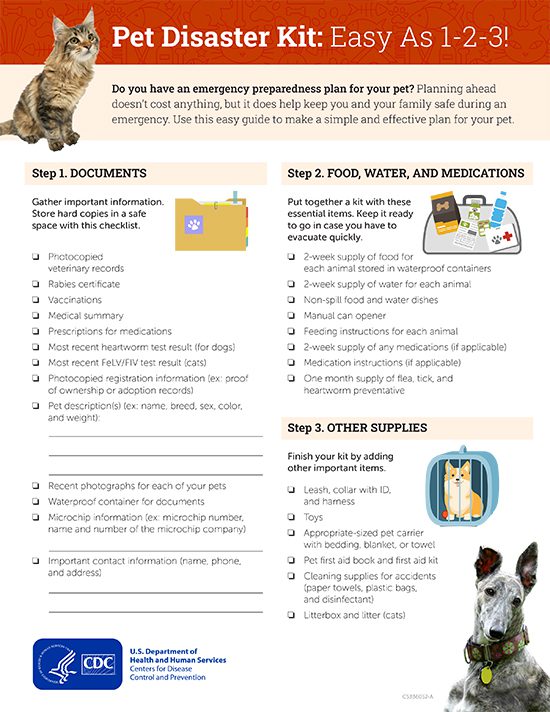Attention all cat owners! Are you aware of the hidden dangers that could be lurking in your beloved feline friend? It's time to uncover the truth about rabies and its potential threat to your furry companion. By understanding the signs and symptoms of this deadly disease, you can protect your cat and ensure their long and healthy life. In fact, did you know that approximately 59,000 people die from rabies worldwide each year? But fear not, with a little knowledge and vigilance, you can prevent your cat from falling victim to this silent killer. So let's dive into the world of rabies alert: recognizing the signs in cats and equip ourselves with the tools needed to keep our furry friends safe.
Key Takeaways:
- Rabies is a serious and fatal viral disease that can affect cats.
- Early signs of rabies in cats may include changes in behavior, such as aggression or withdrawal.
- Other symptoms of rabies in cats can include excessive salivation, difficulty swallowing, and paralysis.
- If a cat is suspected to have rabies, it should be immediately isolated and reported to local animal control authorities.
- Vaccinating cats against rabies is crucial for their protection and the prevention of transmission to humans.
Understanding Rabies Alerts: Why Recognizing Signs in Cats is Important
Why is it important to recognize signs of rabies in cats?
Recognizing the signs of rabies in cats is crucial because rabies is a serious and deadly disease that can affect both animals and humans. Rabid cats can become aggressive, bite or scratch others, and spread the virus through their saliva. By identifying the signs early on, we can take necessary precautions to protect ourselves and our pets.
What are some common signs of rabies in cats?
Cats with rabies may exhibit unusual behaviors such as aggression, restlessness, or excessive salivation. They may also experience paralysis or difficulty walking. Other signs include changes in appetite, vocalization, or overall demeanor. It's important to remember that these symptoms can vary from cat to cat, so it's essential to stay vigilant and consult a veterinarian if you suspect your cat may have rabies.
Spotting the Signs: How to Tell if a Cat Has Rabies
What are some behavioral clues that indicate a cat may have rabies?
If you notice a cat displaying sudden aggression or unexplained fearfulness, it could be a sign of rabies. Other behavioral clues include excessive drooling or foaming at the mouth, disorientation, and seizures. Cats with rabies may also become unusually quiet or irritable. It's important to note that these behaviors alone do not confirm rabies but should be taken seriously as potential indicators.
Are there any physical symptoms that suggest a cat has rabies?
In addition to behavioral changes, there are physical symptoms that might suggest a cat has rabies. These can include dilated pupils, difficulty swallowing, muscle tremors, and weakness. Cats with rabies may also experience a change in their vocalization, producing unusual sounds or being unable to meow. If you observe any of these physical symptoms in a cat, it's crucial to seek veterinary assistance immediately.
Rabies Transmission: Can Humans Get Infected from Cats? Precautions to Take
Can humans get infected with rabies from cats?
Yes, humans can get infected with rabies if they are bitten or scratched by a rabid cat. The virus is transmitted through the saliva of an infected animal. It's important to understand that not all cats with rabies show obvious signs of the disease, which makes it even more critical to take precautions when handling any stray or unknown cat.
What precautions should be taken when dealing with cats suspected of having rabies?
- Avoid direct contact with the cat and do not attempt to handle it without proper protection such as gloves.
- If you suspect a cat has rabies, contact your local animal control or health department immediately for guidance.
- If you have been bitten or scratched by a cat and suspect it may have rabies, seek medical attention right away.
- Keep your pets' vaccinations up-to-date to minimize the risk of exposure to rabid animals.
Suspected Rabies Case: What to Do and Who to Contact for Help
What should I do if I suspect a cat has rabies?
If you suspect a cat has rabies, do not approach or handle the animal yourself. It's essential to protect yourself and others from potential exposure. Contact your local animal control agency or health department immediately. They have trained professionals who can safely handle the situation and determine if the cat needs to be tested for rabies.
Who should I contact for help in a suspected rabies case?
In a suspected rabies case, it's crucial to contact your local animal control agency or health department. They have the expertise and resources to handle situations involving potentially rabid animals. They can guide you on what steps to take, such as capturing or containing the cat safely, and arrange for appropriate testing if necessary.
Rabies Prevention: Vaccinations and Protecting Cats from Infection
How can I prevent my cat from getting rabies?
The most effective way to prevent your cat from getting rabies is by ensuring they receive regular vaccinations. Consult with your veterinarian about the appropriate vaccination schedule for your cat. It's also important to keep your cat indoors or supervise them when outdoors to minimize their exposure to potentially infected animals.
What other measures can be taken to protect cats from rabies infection?
- Avoid allowing your cat to interact with stray or wild animals, especially those exhibiting strange behaviors.
- Keep garbage securely covered to discourage wildlife from entering your property.
- Do not feed or touch unfamiliar cats that may carry the virus.
- If you come across a sick or injured animal, contact animal control for assistance rather than attempting to handle it yourself.
The Importance of Reporting Suspected Rabies Cases in Cats to Authorities
Why is it important to report suspected cases of rabies in cats?
Reporting suspected cases of rabies in cats is crucial for public health and safety. By reporting these cases, authorities can take appropriate actions such as quarantining or testing the animal to prevent the spread of the virus. Timely reporting also helps in tracking and monitoring potential outbreaks, ensuring timely interventions to protect both animals and humans.
Who should I report suspected cases of rabies in cats to?
If you suspect a cat has rabies, it's important to report it to your local animal control agency or health department. They have the expertise and resources to handle such situations and can provide guidance on next steps. Reporting suspected cases promptly allows authorities to take necessary actions and minimize the risk of rabies transmission within the community.
The Importance of Reporting Suspected Rabies Cases in Cats to Authorities
Why Reporting Matters
Reporting suspected rabies cases in cats to authorities is crucial for public safety and the well-being of both humans and animals. Rabies is a deadly viral disease that can be transmitted from infected animals, such as cats, to humans through bites or scratches. By reporting suspected cases, authorities can take immediate action to prevent the spread of the disease and protect the community.
Identifying Symptoms
Recognizing the symptoms of rabies in cats is essential for early detection and prompt reporting. Common signs include behavioral changes like aggression or excessive fear, difficulty swallowing, drooling, paralysis, and unusual vocalizations. If you notice any of these symptoms in a cat, it is vital to report it to the authorities immediately.
- Aggression or excessive fear
- Difficulty swallowing
- Drooling
- Paralysis
- Unusual vocalizations
Rabies can be fatal if left untreated, so reporting suspected cases promptly ensures that affected cats receive appropriate medical attention and prevents further transmission within the feline population.
The Role of Authorities
When you report a suspected rabies case in a cat to authorities, they play a crucial role in investigating and managing the situation. They will work closely with veterinary professionals to assess the cat's condition and determine if it poses a risk to public health. If necessary, they may quarantine or euthanize the cat for testing purposes.
The prompt reporting of suspected rabies cases also allows authorities to alert pet owners in the area about potential risks and provide guidance on preventive measures. This proactive approach helps prevent further infections and ensures that pet owners are aware of the importance of vaccinating their cats against rabies.
By reporting suspected rabies cases in cats to authorities, you contribute to the overall safety and well-being of your community. Remember, early reporting saves lives and helps prevent the spread of this deadly disease.
In conclusion, it is important to be aware of the signs of rabies in cats, such as behavior changes, aggression, and excessive drooling. If you notice any of these signs in your cat, seek immediate veterinary care to protect both your pet and yourself from this dangerous disease.
What are the first signs of rabies in a cat?
Within the initial 2-4 days of being infected, your cat may experience symptoms such as a fever, decreased energy levels, and a loss of appetite. These symptoms can quickly escalate to include weakness or paralysis of the legs, seizures, difficulty breathing, excessive saliva production, and abnormal behavior.
How long does it take to see signs of rabies in a cat?
If your cat has been exposed to the rabies virus, it may not show any immediate signs or symptoms. The period of time it takes for symptoms to appear, known as the incubation period, is typically between 3 to 8 weeks. However, it can range from ten days to a year. The length of the incubation period varies depending on where the infection occurred.
What are the 3 stages of rabies in cats?
After the first signs of a rabies infection, your cat will experience a prodromal stage, a furious rabies stage, and a paralytic stage. Each stage is marked by distinct symptoms as the virus progresses towards the brain and transforms the domestic cat into an aggressive feline.
Does rabies have warning signs?
Initial signs of rabies may resemble flu-like symptoms such as weakness, fever, or headache. Additionally, there may be discomfort, tingling, or itchiness at the location of the bite. These symptoms can persist for several days before progressing to cognitive impairment, anxiety, disorientation, and restlessness.
What do cats eyes look like when they have rabies?
Cats infected with rabies can turn aggressive and attack or scratch without provocation. They may also lose their fear of humans. Although there are no visible symptoms of rabies in a cat's eyes, their pupils may dilate if they are agitated.
Do cats with rabies drink water?
This is why hydrophobia is not directly caused by rabies. Instead, the fear and difficulty swallowing associated with rabies lead to a reluctance to drink water and swallow saliva. Additionally, the muscle spasms caused by rabies also contribute to excessive drooling in affected dogs and cats.

















